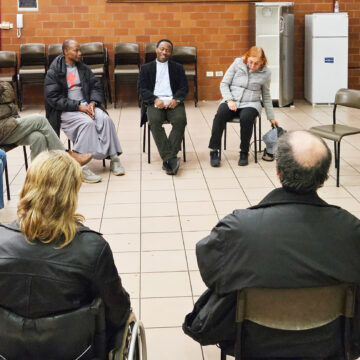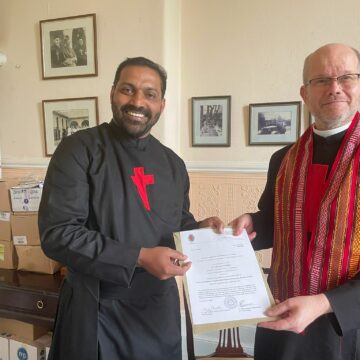 By Fr. Frank Monks
By Fr. Frank Monks
Illness can have a prophetic role in shaking people from the torpor of sleep. Illness is on a collision course with human limitations. In a thorny and direct way, it reminds us of the reality of human limits and of the foolishness of the search for an earthly paradise.
Illness obliges us to compromise with the reality of the human condition. ‘And through sick people it confronts our society with a sign of contradiction, a challenge to truth’ (Bowmann: The Importance of Being Sick, p. 35). Suffering/pain is not always a negative thing; indeed, it can be an opportunity for radical growth. Health is a state of complete physical, social, mental and spiritual wellbeing: it is not only the absence of illness.
The Spiritual against the Religious
Health-care professionals see a system of religious beliefs as being central in care for patients. One must make a distinction between the spiritual and the religious. Spirituality is one of the dimensions of man. For some people, it is the essence of a human being. Religiosity is a system involving the structuring of faith which makes a human being able to express his or her own spirituality. The search for meaning, which is typical of the last stages of life, can involve struggling, confusion, malaise or anxiety, both in the individual and his or her family relatives, as well as in the personnel providing care. This is spiritual pain.
The Definition of Pain
In the view of Cecily Saunders, pain is an experience that involves the imposition or the intersection of various physical, psychological, social and spiritual aspects. The fact that spiritual pain is a state relegated to chaplains offers a starting point where we can speak about bad health-care practice. Things are now changing. One the one hand, this is an accusation levelled against priests involved in pastoral ministry; on the other, this points to a renewed interest on the part of health-care personnel in searching for a response to a need to which the reduced presence of religious cannot give a response.
Given that spiritual needs afflict every individual, caring for spiritual pain is the task of every member of an interdisciplinary team.
How to Recognise Spiritual Pain. How to Support its Victims
Spiritual pain is a feeling of having lost ties, of disharmony, and of disintegration. The task of those who provide care is to provide a response to the deep cry of pain of the soul as its searches for meaning. This cry of pain can take various forms (‘I would like to be freed from these sufferings of mine’; ‘I wish the death of my neighbour had befallen me’): these are not calls for euthanasia but, rather, the weeping of those who are looking for a meaning to illness.
This is the principle of the logotherapy of V. Frankl. The attempt to understand, to rediscover a meaning, to be truly present, can give live anew. Love, in the form of taking care of someone, can mean retrieving the meaning of life.
Even if at first sight spirituality seems to have disappeared, this is a cry that often emerges in the experience of sick people
 How can we Recognise it?
How can we Recognise it?
- A great clue to the existence of spiritual pain is questions that begin with ‘why?’. ‘Why has this happened to me?’ Spiritual pain is distinct from religious pain. A feeling of distance from God, the old images that one has of Him and which it is difficult to free oneself from, express spiritual pain. A feeling of guilt, instead, belongs to religious pain.
- Using intuition means with time developing a feeling that tells you that you are dealing with spiritual pain. Words come to your mind such as suffering, anxiety, deep restlessness.
What can one do to help a person?
- Remain near – ‘The best exit door is always the one you go through’ (Frost). Spiritual pain is not a problem that has to be solved. It is, rather, a ‘question that should be lived’. Prayer is its point of arrival.
- Listen to and know the person. Avoid the temptation to do and flee. We are dealing with helping the person to find his or her own ‘whys?’
- Help the person to give a name to his or her feelings (see enclosure).
- There is no need for any other qualification than being aware of one’s own vulnerability. This means being ready to engage in a journey within oneself.
- Words are often not necessary.
















Camillians on Facebook
Camillians on Twitter
Camillians on Instagram